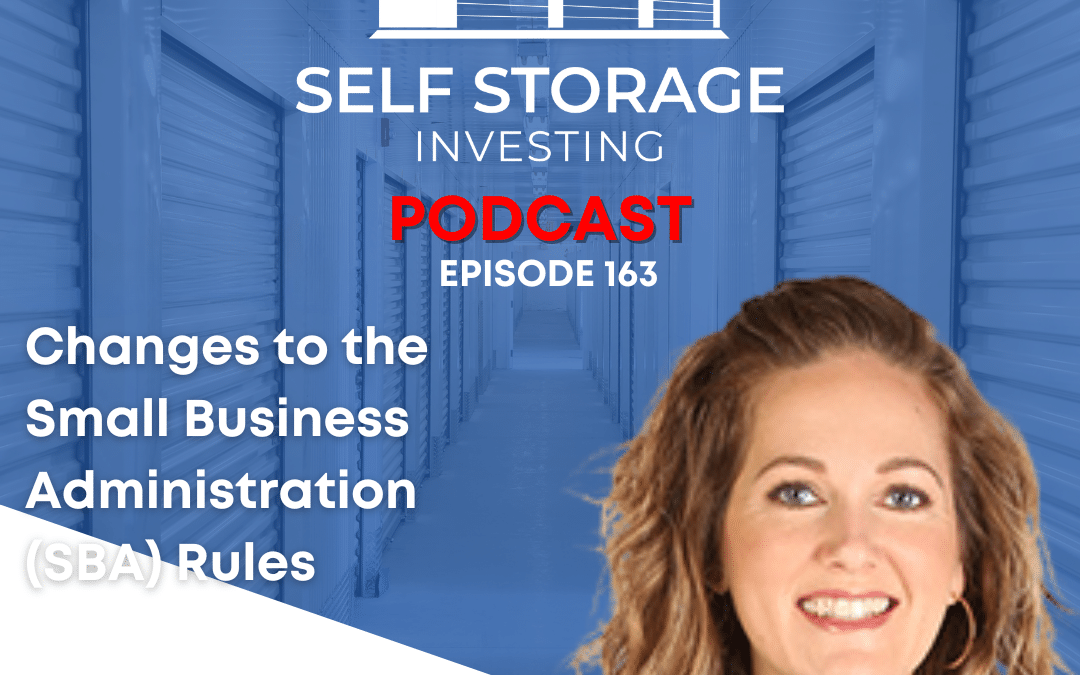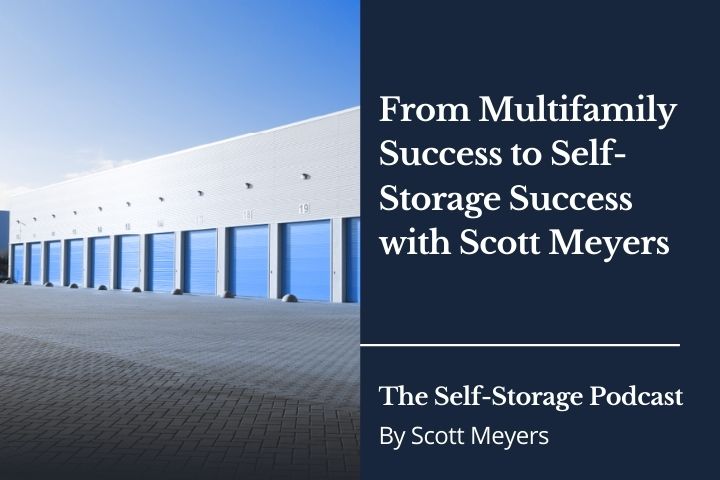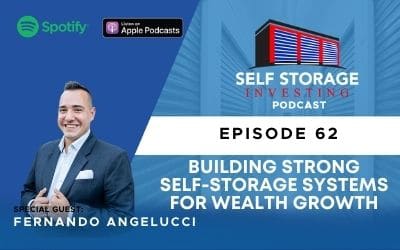The revisions to the SBA rules make it easier for borrowers to meet the 10% equity requirement for loans, allowing seller debt to count towards the full 10% equity injection.
Other changes include the acceptance of Home Equity Line of Credit (HELOC) or cash-out refinance of real property as equity, and the simplification of debt refinance.
And a newly implemented rule limits loan terms for partner buyouts to 10 years.
WHAT TO LISTEN FOR
5:18 Use of HELOC and Cash-out Refinance for Equity
6:30 Clarification of SBA 7(a) vs. 504 Loans
17:40 SBA’s New 10-year Loan Term Limit
26:21 REITs Management Approval
Leave a positive rating for this podcast with one click
CONNECT WITH GUEST ANNE MINO
Website | LinkedIn | Email
CONNECT WITH US
Website | You Tube | Facebook | X | LinkedIn | Instagram
These are changes that could impact cashflow.
The revisions to the SBA rules make it easier for borrowers to meet the 10% equity requirement for loans, allowing seller debt to count towards the full 10% equity injection.
Other changes include the acceptance of Home Equity Line of Credit (HELOC) or cash-out refinance of real property as equity, and the simplification of debt refinance.
And a newly implemented rule limits loan terms for partner buyouts to 10 years.
WHAT TO LISTEN FOR
5:18 Use of HELOC and Cash-out Refinance for Equity
6:30 Clarification of SBA 7(a) vs. 504 Loans
17:40 SBA’s New 10-year Loan Term Limit
26:21 REITs Management Approval
Leave a positive rating for this podcast with one click
CONNECT WITH GUEST ANNE MINO
Website | LinkedIn | Email
CONNECT WITH US
Website | You Tube | Facebook | X | LinkedIn | Instagram
Episode Transcript
Anne Mino (00:00):
That equity requirement is 10%. And one of the major changes was that the SBA has made it a lot easier with how you come up with that 10%.
Announcer (00:16):
This is the Self Storage Podcast where we share the knowledge and skills from the industry’s leading investors, developers, and operators to help you launch and grow your Self storage business. Your host, Scott Meyers, over the past 18 years has acquired, developed, converted and syndicated nearly 5 million square feet of Self storage nationwide with the help of his incredible team at Selfstorageinvesting.com, who has helped thousands of people achieve greatness in Self storage.
Scott Meyers (00:51):
Hello everyone and welcome back to the Self Storage Podcast. I’m your host at Scott Myers. And today’s episode we have Anne Mino with Live Oak Bank. Now, Anne has been not only a friend of the show, but a friend of our organization. For many years we’ve worked very closely with Live Oak Bank as they are the nation’s leading SBA lender in self storage. And Anne has been to our mastermind. She has been to our self storage academies and she has helped countless members in our organization, in our ecosystem to get their first loan and multiple loans and launch and grow their self storage empire. And today what I wanted to do is have Anne on to kind of break down some of the rule changes, the SBA made back in November of 2023, but more specifically focusing on what that means for the self storage industry and obviously what it is that affects us the most. So with that, Anne, welcome to the show.
Anne Mino (01:40):
Thank you so much for having me. I’m thrilled to be here.
Scott Meyers (01:43):
Well, good to have you back, Anne, always good to see your face. So if you would, for the folks who aren’t familiar, perhaps with Live OCA Bank and or working with yourself, give us a little bit of background and then let’s jump into some of these rules.
Anne Mino (01:53):
Perfect. You got it. So Live Oak Bank is the leading SBA lender by dollar volume in the United States. On top of that, our team, my team, which is specifically doing loans for building or buying self storage by dollar volume is the leading lender in the US for SBA loans. So pretty important. We have over a billion dollar self storage portfolio and one of the things we pride ourselves on is our ability to work in niche industries. So there are five lenders on my team, underwriters and closers, credit officers. All we do is eat, sleep and breathe self storage. So as the economy changes as it does, our team stays consistent. We tend to be pretty conservative and our underwriting stays the same. We don’t have to change as the market changes its mind about anything whatsoever. So I’m pretty proud of that makes us really strong lenders.
Scott Meyers (02:47):
Well, we know and that’s why we continue to come back and work with you Ann and Live Oak. And so I’ve been looking forward to this conversation because as you know, we’ve had a lot of questions. I guess the first question is with these rule changes is, Hey Scott, it appears as if the SBA actually made it easier, and that doesn’t seem to be the case with lenders normally. And indeed that is the case, but there are some specific rule changes that occurred back in November that the SBA made, and so I just thought it’d be best to bring you on to have you explain exactly what that looks like and what it means for us in the self storage industry. As you mentioned, the niche that we operate in, that ESBA tends to really tell us about some of those changes and how they’re affecting us and how we need to approach the market now.
Anne Mino (03:27):
Thank you. Great. Yes, there were a lot of changes made recently, and this was a government entity, so you probably can understand that changes are made very slowly, very thoughtfully. They do have to be voted on and a lot of these changes were made with the intention of trying to make the access to capital easier, which I truly appreciate the intention of the SBA in general. SBA is a government controlled program that is not funded by tax dollars. It’s actually funded by the fees that they roll into the loans, which is really nice. It means it’s not going anywhere depending on who’s in the White House and it’s really important and it’s out there to make access to capital easier for small businesses. So very proud of that and I’m really happy with some of the rules that they’ve put in place, truly are just trying to make everybody’s lives easier, the lender’s lives and the borrowers as well.
(04:19):
So one of the first things I wanted to highlight is seller debt as equity. So equity is what you’re required to bring into a project. So for an acquisition in self storage, your minimum down payment for the most part, this is for a seven a loan. Most of what I talk about is going to be for a seven loan. That equity requirement is 10%. And one of the major changes was that the SBA has made it a lot easier with how you come up with that 10%. So seller debt is now an acceptable way to come up with your 10% with the few rules around it. It used to be that if your seller debt was going to qualify, it would need to be on full standby for the life of the loan. So what does that mean? It means the note that is due to them. You can’t pay it until you’re done with your live oak debt, which typically for storage is 25 years. So they just took that away. So that’s really good. There are rules though.
Scott Meyers (05:18):
So Anne, I wanted to ask you a question. Now you mentioned that’s for seven A and just for the folks that may not be familiar with the SBA and the different types of loan programs, can you explain the difference between that seven A and what that means compared to other loans that are available for us in the self storage world?
Anne Mino (05:31):
Yes. So the seven A loan caps out at $5 million, A 5 0 4 loan can go up to 14 million, 5 0 4 loans get underwritten and approved in conjunction with the SBA, meaning your lender goes to the SBA. There’s joint underwriting and joint approval. Nothing wrong with that. It does take a little bit longer and it’s out of our hands. The SBA has to approve it regardless of whether we think the loan is the best deal in the world. Okay, seven A. The lender that you go to, they are underwriting it, approving it in-house, and as long as they’re a designated lender and it’s their capital, it’s a little bit easier to get access to and Live Oak is able to lend more than 5 million on those. But we’ll talk about that in a different podcast. But call your lender and a, you want to know if they’re a preferred lender with the SBA, meaning it’s their capital, it’s their credit decision, and then your lender will put you in the right program for you.
(06:30):
Perfect. Okay. Thanks for that delineation. Carry on. Okay, so seller debt. So here’s what, in order to qualify your seller debt, it needs to, lemme make sure I say this right, the debt must be on full standby for two years. So we’ve gone down from 25 years down to two. That’s a lot easier. We can pay that seller in year three. They’re probably going to be amenable to those terms and there can’t be a balloon payment in the debt, so it’s got to be fully amortizing. You and the seller can decide what that amortization looks like, but there just can’t be a balloon payment. In other words, we want to make sure that the business is going to be able to afford to pay it back. When we are underwriting that debt, we’re going to take into account the full principle and interest payment. So we do need to make sure the business can pay us back and pay that seller back once it’s in a full principle and interest situation. So hopefully that makes sense. And it used to be that seller debt could only count for 5% of your 10% equity injection. It can now count as the full 10%. So things just got a lot more flexible and really better for everybody. It’s better for the seller, it’s better for the buyer.
(07:48):
Let’s see. If you are talking to a seller about seller debt, that’s great. It doesn’t have to be part of your equity injection. You can also use it as part of your capital stack. If it’s not counting towards equity, you can have any terms that you want. So that’s a really important distinction. If you’re listening to this at home, you truly can do whatever you want with a seller note. It’s only if it’s going to count towards equity that we have these certain roles that are in place. Let’s see. Okay. When it comes to a seller, those are prohibited by the SBA. We cannot give principal balance back to, well, let me pause and restructure that.
(08:35):
The seller note principle balance cannot go up in the future. What is eligible is a post-close reduction of principle on the seller note. So this can be used to mitigate transition risk. If any cash goes back to the buyer because the business didn’t meet certain metrics, that’s fine. First we want it to pay down the SBA loan. So let’s say there’s a little bit of cash left, the business didn’t do whatever the clauses were in this situation, if there’s cash first we want to pay down the note up to the point at which it would trigger a prepayment penalty because in the first three years you’ve got a prepayment penalty if there’s more cash that can then go back to the buyer. So does that make sense? It’s going to come back to us until it triggers that you can pay down up to 25% of your principal per year with no penalty. So that’s how that would work. The rest of it can go back to you. That is okay. Seller earn out not okay. Important distinction. We don’t see a ton of seller notes with this type of feature in it, but it’s certainly something that a savvy investor could include in their language.
Scott Meyers (09:53):
Let me pause there for a second. As willian, I think this is important to note for folks that if they’re looking to use an SVA loan for any project or any acquisition, and if they’re going to structure it with a seller note, they need to get you involved sooner than later just to make sure that the right language is in place to make sure this happens. Because the last thing that we want to do is to be able to present something to a seller as if it’s final and then it’s not going to be we have to come back and revisions to say, Hey, the lender or the SBA has come in and stated that we can’t structure it that way. So I guess if there’s anything you want to add on to that. But the bottom line is you’re going to be partners of this project with the borrower and you as the lender so that they should get in touch with you to make sure that all that language is copacetic before they present it to the seller. Correct?
Anne Mino (10:36):
Yes. And thank you so much for stating that you’re exactly right. So we don’t want to dictate how you write your seller note, but we do want you to make sure you’re following SBA rules and we are governed by this by the SBA. So that’s a great distinction. Please talk to your lender early about how to structure your seller note, what language can be used in there and what some of the eligible things are. That’s great. Yes. So sticking in the equity section of the rule changes, sourcing equity got a lot easier and types of equity got a lot easier. So again, this is your 10% equity injection that the bank’s going to ask you to bring into the deal. It used to be that SBA said, we really don’t want you to use borrowed funds. Well, they just kind of opened up the rules on that and it is acceptable now to use a HELOC on your home or to do a cash out refinance of real property, that’s now totally fine. We need to make sure that you can personally pay back that debt. So we’re not going to hit the business for the debt. We do want to see that your income completely unrelated to the storage business can afford to take that debt on. But if it can, that’s completely fine. So if you really don’t want to touch your savings, you can go out and get a HELOC on any piece of real estate you want or a different business that’s now eligible. That’s great.
Scott Meyers (11:58):
So does that change anything in terms of global underwriting then if as you’re looking at a borrower globally and looking at all their assets and whether this now this new facility is going to be cash flowing, something else that may be going under. I mean there’s still a global underwriting component to this, I guess is what I’m getting at. Correct.
Anne Mino (12:17):
There is. So any businesses that a borrower owns 51% or more, we’re going to look at the cashflow of those deals. So if that business is going to take on a HELOC to help with the storage business, we want to make sure it can still cashflow that
Scott Meyers (12:29):
Debt still cover its own. Yep,
Anne Mino (12:30):
Absolutely. Yep. But there’s no other issue if you’re doing a HELOC on a rental property or a personal residence, it’s going to change your debt to income ratio. So we do want to see that your income is twice your debt, so it’s going to change that number. But as long as let’s say you don’t have a ton of cash, but you’ve got a lot of equity in your home, you’re now able to play in the space.
Scott Meyers (12:53):
The other distinction, and I guess it raises another question. In the past there has been the question of whether you can bring private equity partners in if this is a syndicated project and private equity is coming into this project that could be considered borrowed money in the past certain loans or certain SBA programs have stated that you couldn’t and others said there could be. And it seems like for years there was a little bit of gray area with regards to how that’s counted. So could you settle that for once and for all?
Anne Mino (13:23):
I don’t know if I’ll be able to do it once and for all, but I’ll tell you my understanding and how the program’s gotten a little bit easier. If you have minority investors giving money towards the project, that’s totally fine. They need to sign an investor affidavit stating where the funds are coming from and they need to have 19% or less ownership in the business. It gets, funds get tricky. If you are using a fund that has multiple owners and potentially that ownership’s going to change over time, that gets a little trickier. But in general, minority investors not a problem. We no longer have to source three months of bank statements. So that’s a huge meaningful change for each individual guarantor and for anyone else bringing money to the table, typically it’s going to be one month bank statement that we want to see. And then assigning an investor affidavit when it comes to personal injection, they made this a little bit more complicated, but not really.
(14:25):
They don’t want your personal money to come from a business balance sheet. It’s okay for it to come from a business HELOC or a line of credit, but we really want to see those funds transferred to a personal account. And SBAs being very specific with, if you own another company, the funds can’t go directly from that business balance sheet into are the escrow account. So in other words, transfer the funds to your own personal account, be mindful to leave enough money in your operating account for that business to still be considered healthy. If you take all the capital away and I can see on your tax returns that you need $60,000 a year to operate, that’s probably not going to be a good thing. But that’s important to note. They do want to see the funds coming from a personal account. Gifted funds just got a lot easier.
(15:19):
So yes, you can use a gift if you have a wealthy aunt that wants to give money towards your project and does not care about having equity ownership, all they need to do is sign a notarized gift letter. So that just got a lot easier too. So that’s really good. Prepaid expenses still count towards a project that’s usually, we don’t see that on acquisitions, but for ground up construction, we see that a lot. Those still count. We do need to be able to track it. So we need a paper trail. Land that you own still counts so that those things haven’t changed, but the minority investors just got a lot easier, gifted funds got easier. And then being able to use a HELOC or a cash out refinance of another business or piece of real estate all eligible towards your equity injection. So again, trying to make it less cumbersome, which we love.
(16:16):
So the next thing I’m going to touch on is I want to mention it. It’s not a positive change, but it is a very meaningful change and it is something that we don’t understand and that we’re hoping, we’re hoping the SBA is going to take this one back. They changed the rules around partner buyouts or partial changes of ownership. So partial change of ownership is I own a business with three friends and I want to buy either one or all of their shares. Those are now the loan term for that. If I’m borrowing the money can’t exceed, cannot exceed 10 years. So a typical real estate loan that we see in self-storage, they always have real estate 25 year term. If I own it 50%, I want to buy my partner out that new loans on a 10 year term that is really going to hurt business cashflow. So not loving that change, we don’t understand why that has come about. It makes sense if there’s no real estate involved, but there is. And so we’re hoping that one’s going to be walked back. We just have to, it’s a wait and see. But important to note, I get calls all the time about people wanting to buy out their partners and it just got challenging. So you got to have really strong cashflow to make a 10 year term work.
Scott Meyers (17:40):
Okay. So there’s also a piece of this, which I think is probably the most important, is the personal resources because that is one of been one the, I don’t want to say challenges, but maybe one of the prickly points where some folks have gone through the process. They said, boy, that was a little uncomfortable going through as the SBA was looking into all the resources and what had to be collateralized and pledged. So tell us a little bit more about how that has changed for the better
(18:09):
Or what We see as the better.
Anne Mino (18:10):
It used to be the SBA says, Hey, this program is set aside for people that really need the money, can’t walk into a traditional bank and get a loan with 30 to 40% down. So how do they determine, how do they instruct us to determine whether that’s happening or not? It used to be that we had to look at people’s personal cash and one of the metrics was if they have too much cash, they can’t get an SBA loan. So that was limiting a lot of people. And there are multiple reasons. People may have a lot of cash, they may have inherited it, they may have just sold a business, their goals are still to buy another small business or whatever their personal goals are. But anyway, the SBA has just said, we’re no longer going to look at people’s liquid assets and let them be eligible for an SBA a loan.
(19:02):
So I’ll tell you how there’s a great example of this just came up today. So we have somebody that just sold a business and has multiple millions in cash. Obviously they’re going to reinvest it, they want to reinvest it in many different things, not just one thing. We all want to do that. We want to diversify our assets. Prior to November, we wouldn’t have been able to do a loan for them. They just would’ve had too many millions in the bank. Now we can. So we can do as many self storage loans for them that the SBA and our own commissional policy are going to allow for. So that’s really meaningful. We have other metrics that we do have to follow for business size standard, but no more personal resources test. You can’t be too liquid for SBA, so everybody’s cheering
Scott Meyers (19:50):
Well that’s a good thing. Yes. Yes.
Anne Mino (19:53):
That’s a really good one. So the other thing they’ve done, and this is a little bit more gray, and I think for all of this you have to keep in mind, you want to call your SBA lender and have a deeper conversation with them about your situation. But in general, SBA tried to make debt refinance simplified easier. It used to be that it was just kind of complicated. We used to have to go to another person’s bank kind of not get permission, but get a letter that that bank was not willing to refinance them. And SBA has now said, we no longer have to do that. So if a borrower comes to me is unhappy with their other bank or unhappy with their other rate on their seven a loan, I can now refinance that without a lot of gray area or
Scott Meyers (20:37):
Red tape. Well that’s good because it seems like Anne, anytime that we have contacted you or anybody within our community has and talk about a refinance, the answer has really been, well, we really don’t do that. And so that’s good to see that now there is a vehicle at an on-ramp to be able to at least have that conversation.
Anne Mino (20:55):
Yes. So here’s what SBA cares about. That has always been in place, but is now still the rule. We have to be able to reduce your monthly payment by 10%. So in other words, we don’t want to put you in a worse position. So if you have a longer term loan and for whatever reason we have to shorten the term, that’s not going to be successful. But in general we can refinance our own debt and another lender’s seven a debt a lot more easily, as long as we can improve your position. And I like that rule. I think it’s great that a lender can’t go refinance one of my customers and put them in a worse position. That’s not being a friend to your borrower. I happen to like that goal.
Scott Meyers (21:32):
That’s good. That’s good protection. Good.
Anne Mino (21:34):
Yes. Something to note all the debt if we are refinancing debt, it does have to have been current for the last 12 months of the loan. I did have somebody that, this is in the last six months, he had stopped paying on the loan and he had to get current, which slowed us down in closing before I could refinance it. So it wasn’t a problem. I was able to refinance, but keep making your loan payments. We have to be able to show that the debt’s been current for 12 months.
Scott Meyers (22:02):
That’s just always good advice no matter what.
Anne Mino (22:06):
Yes. So that’s kind of the quick and dirty on debt refinance. And then one of the other really meaningful changes that, Scott, I know you and I have talked about this many times and when I’m live with you and your audiences and people get really excited about this one. So SBA is now considering acquisition projects as an expansion versus a change of ownership. If ownership in both businesses stays the same, they share the same six digit next code. And I’ll go into what that is in a moment and they operate in the same geographical area. Why do I want to be considered an expansion versus a net new change of ownership when I’m doing an acquisition? Because I can do it with no money down. So if you own storage and you want to buy the person down the street, any SBA lender can now do that with no money down.
(23:06):
As long as you check these three boxes. Ownership of the entity has to stay the same, meaning your own entity can’t change even 2% no cannot do it. The next code is on your tax return on the top right hand side. And it is just a six digit code that tells the IRS and the SBA what your industry is. And that has to be the same. So if for some reason your CPA has your business listed as a warehouse instead of self storage or it’s like lessers of mini warehouses is what our next code is in self storage, if yours is something different that might be trickier for you to then go acquire, acquire, the two tax returns have to match and then they have to be same geographical area that’s open to interpretation as you can imagine. It needs to make sense, it needs to be logical. So it’s okay for it to be across state lines. Are they within a couple hours of each other where it makes sense that you’re going to create some brand recognition and you’re going to share resources, you’re sharing your marketing person, maybe you’re sharing your maintenance person. And those sorts of things look the same for both businesses. And it’s an expansion, no money down.
Scott Meyers (24:16):
So where is that decision made? And I guess pointing back to my statement earlier is that you need to get your SPA lender involved earlier on rather than later. But where’s that made? Is that in underwriting or once it goes to loan committee? Because the timing of this is pretty critical if you’re looking to either not have any money down or having money down if you’re going to go buy an annex site or buy your competitor, are they five miles down the road? Are they 10? Who makes a decision and how do we approach that?
Anne Mino (24:45):
It’s a great question. For Live Oak, the recommendation is made by the lender. So we will have good justification before the deal ever gets to an underwriter of why we believe this is an expansion. And if we have any doubts about a deal when it comes to this or anything else, we will try as much as we can to pre-flight it with a credit officer just to say, this is how I’m seeing this deal. Do you agree with me? Is there anything you want me to dig into deeper? So we’ll do that on the front end. We really try hard to get to a yes or a no really fast front end. So you definitely want to talk to your lender about it early. If they’re not sure, that may cause you to pause. If that’s the only way the deal works for you, you can always talk to a different lender or ask them to dig in deeper. You need to know that pretty early on. Of course.
Scott Meyers (25:38):
Of course. Well, and this is a pretty profound one. I mean of everything that we mentioned, once again, Anne, thanks for clarifying all of these and they all are. You’re right, positive. But this one, this could be a game changer for many folks. I mean, if your strategy already is to go into these secondary tertiary markets and then being able to buy up the competitors in that market, it’s much easier to do so in those markets and smaller facilities. And now if you have the ability, which the SBA tends to, I dunno, it seems to work better in some of those environments versus the REITs trading off properties from one to another or larger projects and also the size, the lending limits of 5 million. But if you’re going into these smaller markets and you’re trying to buy up competition, this could change the business plan of many folks out there for the better.
Anne Mino (26:21):
Absolutely. And I’m glad you brought up the REITs because one of the changes that was made as well is that, well, lemme back up for a minute. When we started lending in self storage maybe 10 years ago, the SBA said, REITs are in play. That’s fine. You can have any one of the REITs manage your property. No problems. We did a lot of loans for those REITs. We believe in them. We think they do a great job. Then the SBA said, wait a second, if they’re putting their name on the outside of the building and they own the employees, we feel like that’s no longer a personally owned business. That is a passive real estate investment. So then they said, no more REITs. There are plenty of other third party managers you could use, but it couldn’t be those big guys. They just walked that back so they could change their minds again. But right now we are able to lend to any one of the REITs. So we’ve been able to do loans for customers that historically we were having to say no to.
Scott Meyers (27:20):
Okay. And so when you say lend to the REITs, that also includes then the individuals who are having the REITs third party manage their facilities. Correct?
Anne Mino (27:27):
Correct. Yes. Not the REITs themselves, but we’re lending to an individual that just says, I want this REIT to be my third party manager.
Scott Meyers (27:34):
Yep. Yeah, that was a stumbling block for many folks. Many of our folks, they just found that the best property management company was a REIT or that the REITs dominated in that market in terms from a marketing standpoint and being able to effectively serve that particular facility because they had a good footprint in that market. And if not, it would be a little more inferior run perhaps, or put the property in jeopardy other than making the best decision to manage that other than putting the REITs in, which was the best decision in terms of managing that facility. So that’s good to see because it was almost counterproductive. If you want this thing to do well, you put the best performing management company in it. Sometimes it is the REITs in that market.
Anne Mino (28:14):
Absolutely. And from a bank’s perspective, if you’ve got a REIT blessing your project, that’s a really good thing, right?
Scott Meyers (28:21):
It sure is. Yeah. Yeah, their underwriting is pretty strong, typically.
Anne Mino (28:25):
Yes. So we’re happy with that change. It’s all subject to change again, but for today, this is the world we’re living in.
Scott Meyers (28:37):
As the saying goes, the golden rule is those who have the gold make the rules. And so we are thankful for that. But these are all very positive. And again, the reason why we wanted to have you on to explain these. And so anything else now? I mean this has been out not very long in November, but you’ve seen a number of loans come across your desk. Anything that maybe turned out a little bit better than you had thought in terms of any examples or maybe some other pitfalls on the other side of that with these rule changes that maybe played out a little bit differently once you got an actual loan going to committee?
Anne Mino (29:08):
I think the rule changes have made everything easier. I can’t think of a situation where, well, the only situation we’ve had that was bad, potentially negative was I had somebody come to me that wanted to buy out their partner and that I wasn’t able to help them with an SBA loan just because of that 10 year rule change. Everything else, for the most part, we’re very conservative in our underwriting. We’re still looking for strong projects and strong guarantors. This just kind of took off some, what I would call governors maybe didn’t make the most sense in the first place.
Scott Meyers (29:45):
Well, as you stated, I would hope to see, and not because I’m in this situation, but I would hope to see that the SBA would take a look at that partner rule in the 10 year. Because let’s face it, the time that we’re heading into right now, it has been challenging. And there are some troubled and challenged partnerships and projects and projects because of partnerships. So I would expect that they will probably be seeing more of that where these partners or one individual is just fine, but the other person, maybe they’re in other asset classes or they just need to, something else is going on in their life as a result of the economy and they need to sell out of this partnership. And if they’re currently in a loan, that may make it a little more challenging. So I dunno, maybe if enough people run into that and bring it to their attention that that might change.
Anne Mino (30:25):
I think it’s very possible that it could. The SBA does do a great job of going to their strong lenders, which I’m grateful to say we’re in that pool and asking questions, is this making sense for you? They listen and they’re trying to be nimble and meet the needs of everybody. And again, that particular rule, we’re not exactly sure what the genesis of it was, what the intention is around it. So there’s always a chance that it could change, which would be great. And we will keep you posted.
Scott Meyers (31:02):
Well, we appreciate that and appreciate you and taking time out of your busy schedule. We know that it’s always good when we get Anne Min out of time because things are busy over at Live Oak. So Ann, how is, so Anne, what is the best way for people to be able to get in touch with you?
Anne Mino (31:17):
Thank you so much for asking. So I’m going to give out my email address in just a moment, and when you email me, my response is going to be to give you a link to my calendar and you can schedule a call at a time that’s convenient for you. So my email is Anne, a NNE, dot mineo, MINO at Live Oak, just like the Tree Bank.
Scott Meyers (31:41):
Perfect. Perfect. Well, Anne, once again, thanks so much for spending time with us today, folks, reach out. The reason why we have Live Oak and only Live Oak at our events and on our podcast in terms of lenders is because they do such an incredible job for us and for everybody in our community. Not only because they are the nation’s largest, but that’s how they got to be that way is because they care and they take good care of our folks as well. So do not hesitate to reach out and frequent Live Oak for your next acquisition. So Ann, any other parting words as we wrap up for today? Or maybe as you’re approaching 2024 as a lender, how are you looking at this market and what are your thoughts on it?
Anne Mino (32:21):
We are excited going into 2024. Our phone is ringing off the hook. We are thrilled. Probably the most important thing for people to know as that we’re not changing anything about our underwriting standards. We are. We understand it. Once you start talking to me about the nuances of the industry, you’re going to learn very quickly that myself and all my lending partners here and the underwriters and closers, we speak the language, we know the industry, we trust it, we believe in it, and as does Live Oak.
Scott Meyers (32:51):
Thanks so much Anne and I will never pass up an opportunity to touch on our philosophy about underwriting, which is the exact same as you mentioned as at our underwriting doesn’t change. The only thing that’s changing in this market is our cost of capital, but our buffers and our baselines and our guardrails and everything is all in place just the same as it was before. The only thing that changes is just our inputs. And so I appreciate you mentioning that as well as we continue to remind our folks that doesn’t change because we get that question so often. So thanks for reminding us of that as well. Thank you
(33:17):
And thank you so much for having me.
(33:19):
Alright, thanks again, Anne. And thanks so much for joining us once again, and I will look forward to seeing the rest of you on another episode of the Self Storage podcast. Thanks everyone. Take care.
Announcer (33:34):
Hey, wait, three things before you leave. First, don’t forget to follow the Self Storage Podcast and turn on your notification so you never miss another episode. And while you’re there, please leave us a five star review if you like the show. Second, be sure to share your favorite episodes and more via Instagram and don’t forget to tag us. And lastly, head to the links in the show description and hit follow on Twitter and Facebook to get a front row seat as we grow and scale our business and bring you along with us.
















